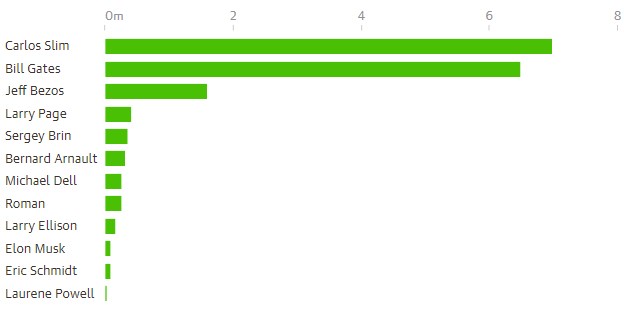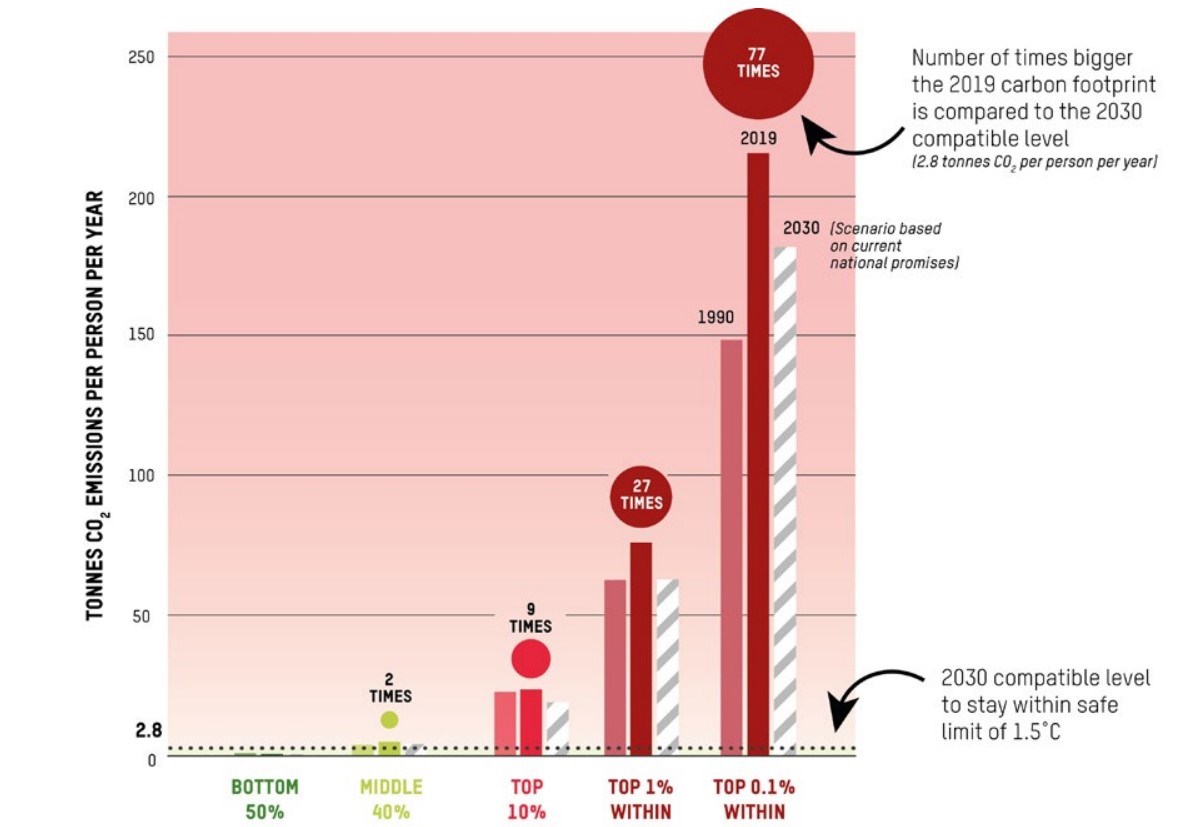 According to an analysis published by the nonprofit Oxfam International, the richest one percent of the global population is responsible for the same amount of carbon emissions as the world’s poorest two-thirds, or 5 billion people to be more specific. Although the report says that tackling the climate crisis is a common problem, it states that not everyone is equally responsible and government policies should be adjusted accordingly.
According to an analysis published by the nonprofit Oxfam International, the richest one percent of the global population is responsible for the same amount of carbon emissions as the world’s poorest two-thirds, or 5 billion people to be more specific. Although the report says that tackling the climate crisis is a common problem, it states that not everyone is equally responsible and government policies should be adjusted accordingly.The report, titled “Climate Equality: A Planet for the 99 Percent”, is based on research compiled by the Stockholm Environment Institute (SEI) examining consumption emissions associated with different income groups through 2019.
The richest people suffer the most
Researchers found that 16 percent of all carbon emissions worldwide are produced by the world’s richest 1 percent, a group that includes billionaires, millionaires and those earning more than $140,000 a year. This 1 percent makes up approximately 77 million people. The analysis found that their contribution was “the same as the emissions of the poorest 66 percent of humanity—about 5 billion people.” The report also highlights that the richest 10 percent of people worldwide accounted for roughly half of that year’s emissions.
The report reveals that someone in the 99 percentile would need 1,500 years to reach the amount of carbon produced in a year by the richest billionaires. The report also highlighted that just 12 of the world’s richest billionaires contribute to approximately 17 million tonnes of emissions from their homes, transportation vehicles, yachts and investments. This is equivalent to the emissions of 2.1 million homes. These billionaires include Carlos Slim Helu, Bill Gates, Jeff Bezos, Larry Page, Sergey Brin and Bernard Arnault, respectively.
 Citing a widely used methodology known as the “death cost of carbon”, the report found that the amount of carbon dioxide emissions reported to be produced by the richest 1% in 2019 – 5.9 billion tonnes – was enough to kill 1.3 million people at global temperatures. It is stated that it is sufficient to change the
Citing a widely used methodology known as the “death cost of carbon”, the report found that the amount of carbon dioxide emissions reported to be produced by the richest 1% in 2019 – 5.9 billion tonnes – was enough to kill 1.3 million people at global temperatures. It is stated that it is sufficient to change theA fair climate policy is a must
 “We think there will never be good policy on this issue unless governments enact progressive climate policies that demand the biggest emitters make the biggest sacrifices,” Max Lawson, one of the authors of the report, said in a statement.
“We think there will never be good policy on this issue unless governments enact progressive climate policies that demand the biggest emitters make the biggest sacrifices,” Max Lawson, one of the authors of the report, said in a statement.These measures could include, for example, imposing a tax on those who fly more than ten times a year, or imposing a much higher tax on non-green investments than the tax on green investments. While the current report focuses only on the carbon associated with individual consumption, the report finds that the personal consumption of the super-rich is dwarfed by the emissions from their investments in companies.
Greenhouse gas emissions, which trap heat in the atmosphere and cause warming, have increased by 1.2 percent since last year, reaching record levels. UN Secretary-General António Guterres told reporters on Monday that “if there is no change, emissions in 2030 will be 22 gigatonnes more than the 1.5 degree limit allows.” If it continues like this, the targeted 1.5 degree limit will be exceeded in the next 5 years. This can cause radical irreversible damage.